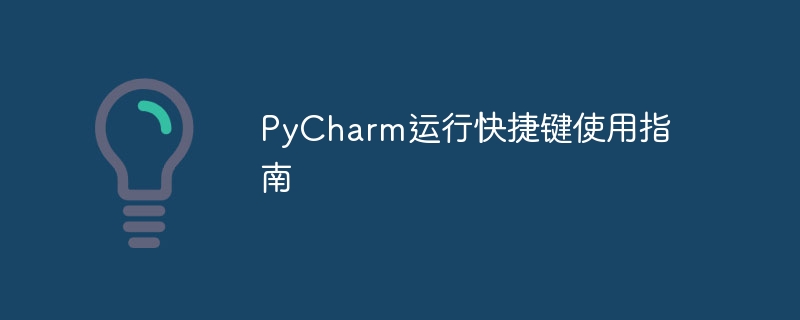

"PyCharm Running Shortcut Key Usage Guide"
PyCharm is an integrated development environment (IDE) developed by JetBrains for Python programming. It provides a rich set of features and tools to help developers code, debug, and test more efficiently. In PyCharm, the use of shortcut keys is one of the keys to improving work efficiency. This article will introduce in detail the commonly used running shortcut keys of PyCharm, and attach specific code examples to help readers better master the usage skills of PyCharm.
print("Hello, PyCharm!")After pressing "Shift F10", the program will output "Hello, PyCharm!" in the PyCharm run panel.
x = 5 y = 10 result = x + y print(result)
After pressing "Shift F9", the program will be executed in the code debugging mode and the variables x, The values of y and result.
import unittest
def add(x, y):
return x + y
class TestAddFunction(unittest.TestCase):
def test_add(self):
self.assertEqual(add(3, 5), 8)
if __name__ == '__main__':
unittest.main()After pressing "Ctrl Shift R" at the beginning of the line of the test method test_add, PyCharm will execute this unit test method , and display the test results in the run panel.
By mastering the above-mentioned PyCharm running shortcut keys, developers can develop, debug and test code more quickly and improve work efficiency. At the same time, by constantly practicing and using these shortcut keys, we can become more proficient in operating PyCharm, making programming work easier and more enjoyable. I hope this article can be helpful to readers in their development work in PyCharm.
The above is the detailed content of Guide to using PyCharm shortcut keys to improve running efficiency. For more information, please follow other related articles on the PHP Chinese website!




